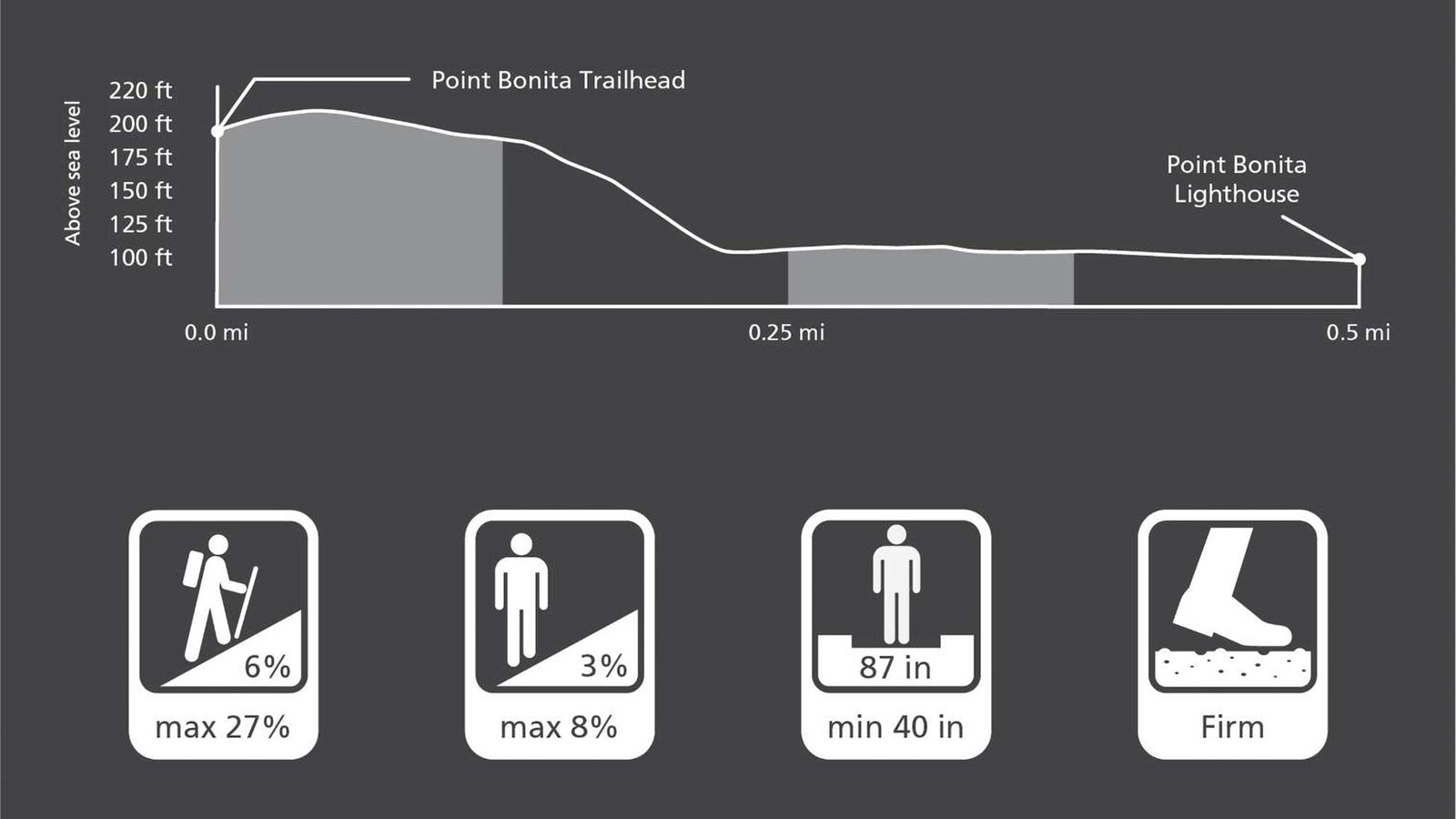Last updated: April 25, 2022
Place
Point Bonita Lighthouse Trailhead

Parking - Auto, Restroom, Scenic View/Photo Spot, Trailhead
Point Bonita is generally open Sundays and Mondays 12:30 p.m. to 3:30 p.m. Call 415-331-1540 to confirm before making the trip. A cellphone tour is available 24/7. Sign posts along the trail give instructions on how to use your cellphone to listen to pre-recorded audio with additional information about the history and environment around Point Bonita.
Cliff walk to the lighthouse
The quarter-mile long trail from the parking lot to the lighthouse is spectacular. Enjoy wildflowers, pillow basalt rock formations and scenic views along the Pacific cliffs as you pass the historic Coast Guard rescue station. The trail is steep, windy and may be dangerous for small children. Sorry, no dog friends allowed.
Point Bonita Trail Overview
Distance: 0.5 mi (0.8 km)
Elevation Gain: -75 ft
Time: 1 hour
Trailhead: Point Bonita
Slope: Avg 6% Max 27%
Side Slope: Avg 3% Max 8%
Width: Avg 87" Min 40"
Trail Surface: Firm
Dog and Trail Etiquette
Point Bonita Lighthouse and trail are closed to dogs. Please stay established paths. There are uneven surfaces, loose rock formations, and steep drop offs in the surrounding areas. Off-trail travel harms plants and causes erosion.
Perilous passage
Despite the lighthouse, navigation through the Golden Gate continued to be dangerous. Over 300 ships ran aground during the Gold Rush years. The worst disaster occurred in 1901, when the steamer ship SS City of Rio de Janeiro collided with Point Diablo, near Point Bonita. The bulkheads of the ship weren't water tight, and those below deck were left in darkness as the steamer filled with water. The ship backed off the rock where it ran aground and sank in ten minutes along with 128 passengers.
Point Bonita through the centuries
In 1874, the government approved plans for lifesaving stations at the entrance of Golden Gate. Twenty-five years later, in 1899, construction began on the Point Bonita US Life Saving Station. Plans called for a residence, cisterns, fire and storage sheds, a garage and sidewalks. Unsafe conditions due to inclement weather hindered construction.
Point Bonita Life Saving Station had two boats; a heavy lifeboat that was essential to navigating in the dangerous conditions of the rocky coast, and a surfboat, a lighter boat launched directly through the surf. Typically eight to ten men manned the lifesaving station, which was operated by the Coast Guard. Some say the brave men's motto was "You must go out, but you don't have to return."
From Cannons to Laser Foghorn
When Point Bonita is cloaked in fog, ships navigate by sound. Originally, a cannon gave the warnings, but this method was replaced first by a fog bell, and in 1874, a steam siren. Now, a laser beam is used to detect water and dirt particles on the light. When particles accumulate, an electric foghorn is triggered.
